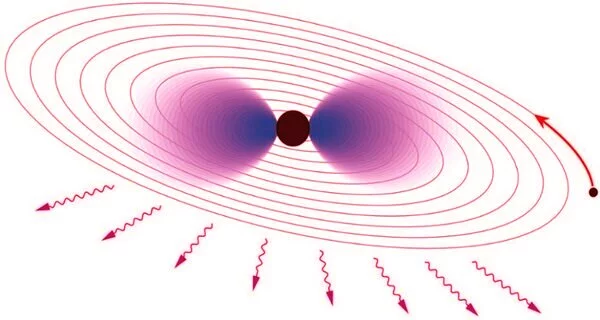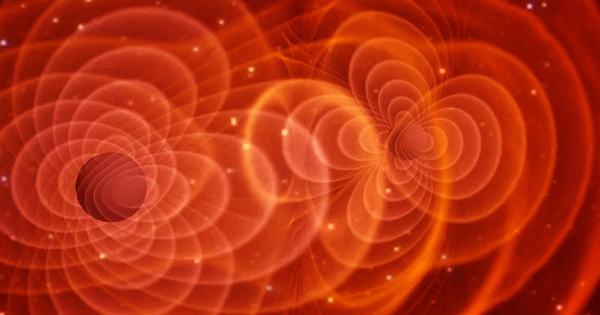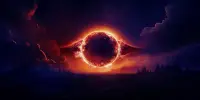Gravitational waves, the invisible ripples in the fabric of space predicted by Albert Einstein, are ushering in a new era of astronomy, allowing scientists to see parts of the universe previously thought to be invisible, such as black holes, dark matter, and theoretical subatomic particles known as axions.
Clouds of ultralight particles can form around rotating black holes. A team of physicists from the University of Amsterdam and Harvard University has now demonstrated that these clouds would leave a distinct imprint on the gravitational waves emitted by binary black holes.
Black holes are thought to consume all forms of matter and energy that surround them. However, it has long been known that they can also lose some of their mass through a process known as superradiance. While this phenomenon is well-known, it is only effective if new, previously unobserved particles with extremely low masses exist in nature, as predicted by several theories beyond the Standard Model of particle physics.
When mass is extracted from a black hole using superradiance, a large cloud forms around the black hole, resulting in the formation of a gravitational atom. Despite the enormous size of a gravitational atom, the comparison with sub-microscopic atoms is accurate because the black hole and its cloud are similar to the familiar structure of ordinary atoms, where clouds of electrons surround a core of protons and neutrons.
According to general relativity, the merger of two very compact objects – such as white dwarfs, neutron stars or black holes – will cause the final object to collapse to form a black hole. But there are alternative theories that predict they could also form objects of a similar mass and radius to black holes, but without an event horizon. These mysterious compact objects would therefore have a surface that would reflect gravitational waves.
Ionizing gravitational atoms
When mass is extracted from a black hole using superradiance, a large cloud forms around the black hole, resulting in the formation of a gravitational atom. Despite the enormous size of a gravitational atom, the comparison with sub-microscopic atoms is accurate because the black hole and its cloud are similar to the familiar structure of ordinary atoms, where clouds of electrons surround a core of protons and neutrons.
In a publication that appeared in Physical Review Letters this week, a team consisting of UvA physicists Daniel Baumann, Gianfranco Bertone, Giovanni Maria Tomaselli, and Harvard University physicist John Stout, suggest that the analogy between ordinary and gravitational atoms runs deeper than just the similarity in structure. They claim that the resemblance can in fact be exploited to discover new particles with upcoming gravitational wave interferometers.

The gravitational equivalent of the so-called “photoelectric effect” was investigated in the new study. Ordinary electrons absorb the energy of incident light particles and are thus ejected from a material in this well-known process, which is used to generate an electric current in solar cells, for example. When the gravitational atom is part of a binary system of two heavy objects, it is perturbed by the presence of the massive companion, which could be a second black hole or a neutron star.
Just as the electrons in the photoelectric effect absorb the energy of the incident light, the cloud of ultralight particles can absorb the orbital energy of the companion, so that some of the cloud gets ejected from the gravitational atom.
Finding new particles
The team demonstrated that this process can dramatically alter the evolution of such binary systems, significantly reducing the time required for the components to merge. Furthermore, the ionization of the gravitational atom is enhanced at very specific distances between the binary black holes, resulting in sharp features in the gravitational waves that we detect from such mergers.
These effects could be observed by future gravitational wave interferometers, which are machines similar to the LIGO and Virgo detectors that have revealed the first gravitational waves from black holes in recent years. Finding the predicted features in gravitational atoms would provide compelling evidence for the existence of new ultralight particles.















